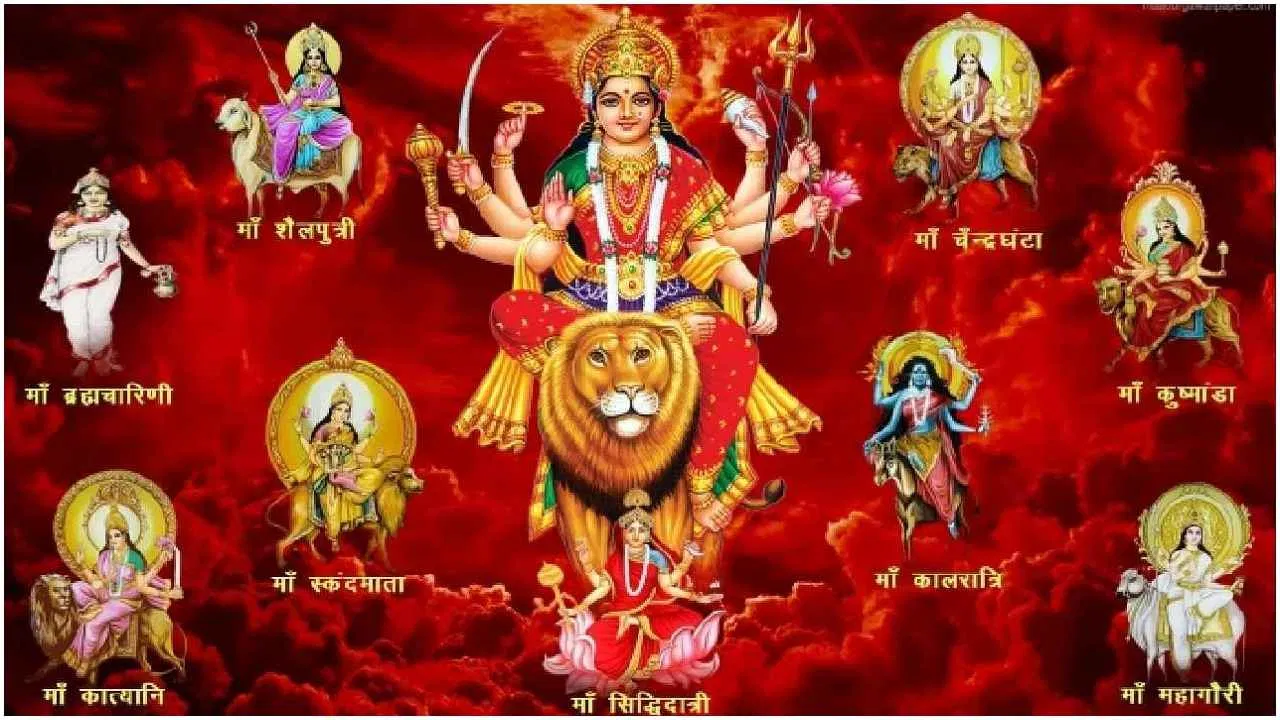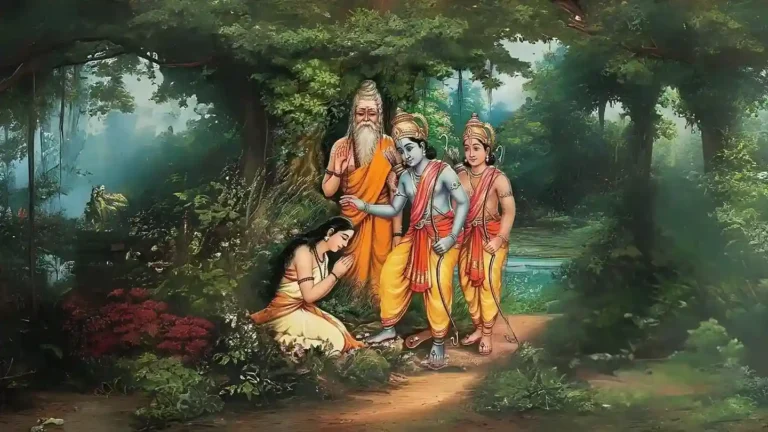Please Like the Blog and Share it for Maximum Reach
Table of Contents
Significance of Navaratri Festival
Navaratri represents a celebration of the 9 forms of Devi Durga. Also, the significance of this festival increases with it having reference to Sri Rama in Ramayana.
Sri Rama worshipped the 9 forms of Devi Durga and received the Adi Parashakti Astra (Weapon) to fight against Ravana. By exercising the Adi Parashakti Astra, Sri Rama slew Ravana and established Dharma on the auspicious day of Vijaya Dashami or Dussera.
The span of 9 days of Navaratri remains auspicious for devotees, Yogis and Sages who worship and follow the path of Shakti Devi.
The respective forms of Devi showers her blessings on devotees and eradicates ill luck and doom from the life of her devotees. Other than worshipping the potent Goddess, people preach extensively about the 10 forms of Mother Durga.
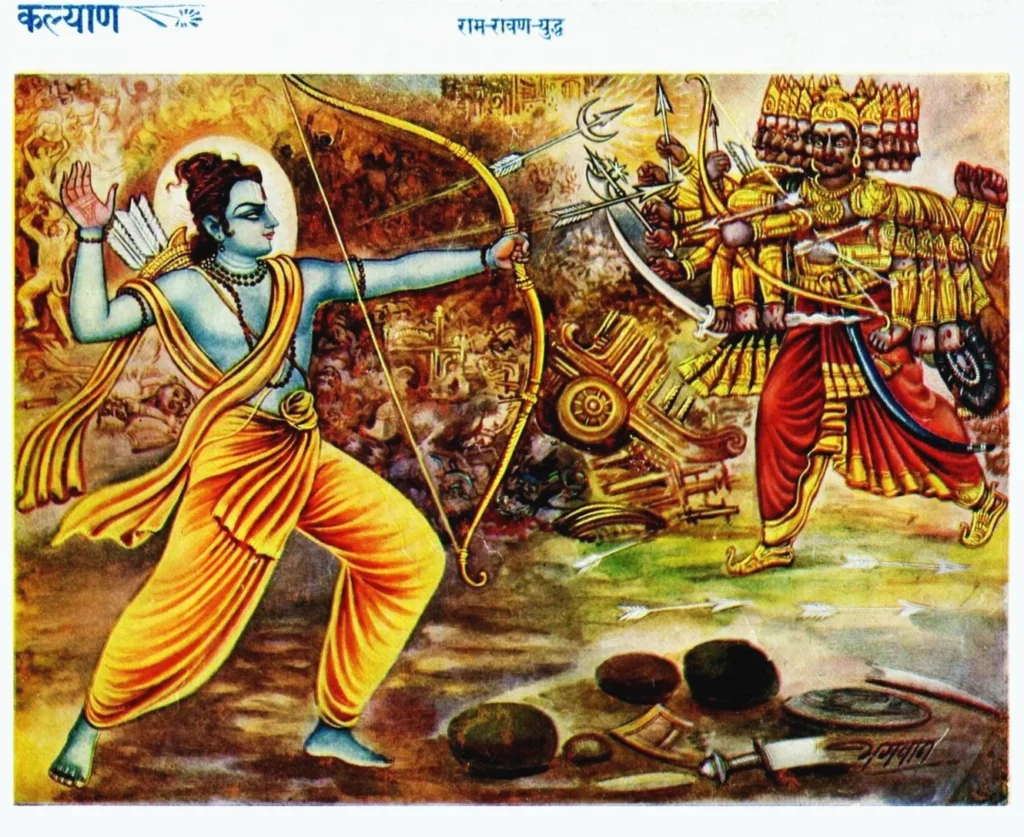
Mahavidya and the 9 days of Navaratri
These 10 forms represent the Dashamahavidya. The auspicious festival of Navaratri begins on Amavasya Night (Moonless Night), and concludes on Dashami Tithi, evening.
People call the festival Navratri as the festival lasts for 9 Nights (Nava-ratri).
This time frame of nine nights remains wholly dedicated to Nava-Durga or the 9 forms of Devi. On the other hand, the people dedicate the 10 days of the festival (Mornings to the 10 Mahavidyas (Dasa Mahavidyas) of Devi.
In a Year people celebrate 4 Navaratri festivals of which 2 remain secretive while people celebrate the remaining two.
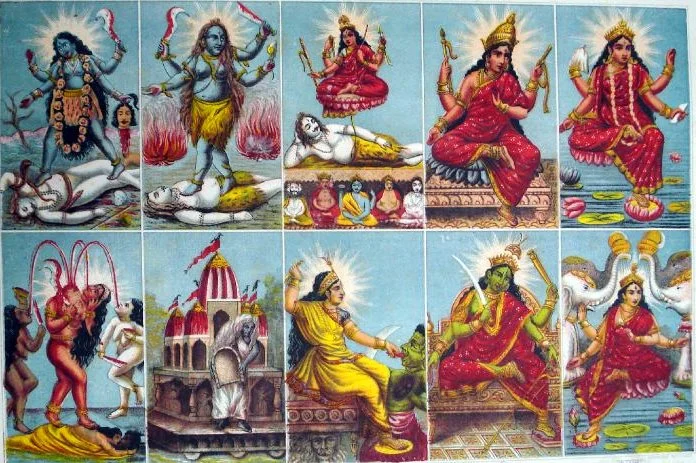
First Interpretation of Navaratri
The most important Navratri festival falls in September/October. It falls during the transition period of the seasons. When summer transits to winter and when the days start becoming shorter with nights longer, at that transit period, we celebrate Navratri.
In earlier times, there no concept of national holidays or weekends existed. Instead, people only observed festivals.
People felt deeply connected to their culture and religious practices.
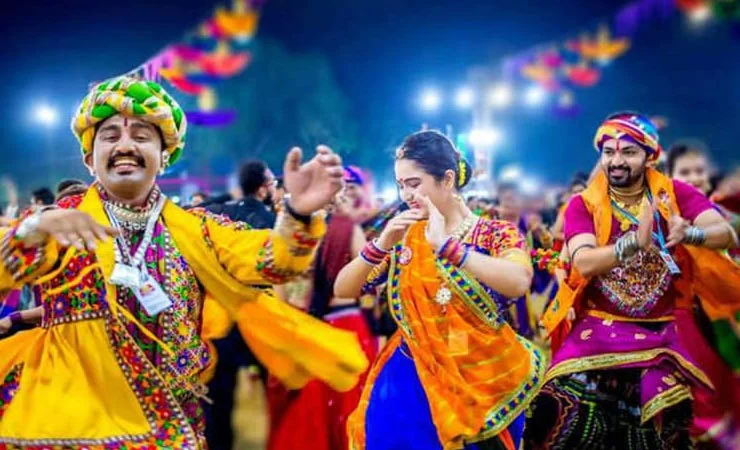
Thus, in Sanatana Dharma, festivals fall on significant days, intended to improve the lifestyle of the common man. So, Navaratri comes as a 9-day-break for people, from the regular routine of life.
It provides one with an opportunity to make alterations to one’s lifestyle.
People become more conscious of their bodies, become more sensitive to the changing season, their sleep requirements and diet.
Second Interpretation of Navaratri
The name of this festival has got many other interpretations.
On one hand, Nav (means 9) and Ratri can be further divided into (Ra-meaning-freedom) and (Tri-meaning- Tapa Traya). Tapa Traya refers to the 3 types of afflictions that torment human beings.
These are physical, mental and causal afflictions. Hence, people identify Navaratri as a period where jivas can find solace from their sufferings. Through Sadhana one can tap into that inner core of energy and break free from all illusions and suffering.

Hence, it translates as an extremely auspicious period to conclude as well as commence one’s spiritual practices.
Third Interpretation of Navaratri
Navaratri has got another symbolism. We can compare the 9 days to the 9 months an infant spends in its mother’s womb. The 9 days of Navaratri thus highlight the importance of inward journey, towards exploring oneself.
An infant needs to spend the gestation period inside the mother’s womb, in a secured environment.
This period prepares the child to face the world.

When we spend this period successfully, we celebrate the birth of the new-born.
This period of rejoice appears similar to Vijaya Dashami where one becomes victorious over evil. Just like a child comes anew into this world, the Sadhaka (after performing the required rituals) becomes empowered with Divine energy.
Fourth Interpretation of Navaratri
Puranic anecdotes suggest that on Navratri, Devi slays all the demons.
Here the names of the demons become very significant. Each demon represents a negative tendency and Devi slaying them, simply means man’s journey towards enlightenment.
For example: Madhu and Kaitabh represent Craving and Aversion. Mahishasura represents Depression or Inertia.

Chand represents the opposing mentality ingrained within modern man while Munda means the headless. Munda thus signifies unawareness. Dhumralochan, yet another demon, means the smoky eyed one.
He represents man’s obnoxious aversion to truth.
Raktabeeja means blood cell. This demon symbolizes blood related diseases like Cancer and other genetic disorders.
The demon brothers, Shumba and Nishumba signify self-doubt, doubting others without rhyme or reason. On the blessed day of Navratri, Sadhakas invoke Devi and request her to relieve them from all these devil forces.
A Sadhaka must transcend the first 3 days of Navratri dedicated to Maha Kali or the Ruler of Tamas. Soon, the sadhaka enters the frequency levels of Maha Lakshmi the Ruler of Rajas, to whom the next three days remain dedicated.
At last the Sadhaka moves along and establishes himself in Shuddha Sattva, where Devi Saraswati becomes the chief deity. These transitions between days also mark the Sadhaka’s journey from Tamas to Sattva or from Ignorance to Knowledge.
Devotees take up austerities like Maun Vrata (maintaining silence) and Upvasa (fasting).
Why do we fast on Navratri?
Typically, we fast on Navratri as our family traditions suggest. However, many scientific arguments support this practice. Intermittent fasting has numerous health benefits.
Though science, off late, discusses its significance, our Vedic tradition has always been promoting Upvasa, Vrata or fasts on predefined days, such as Ekadashi and Navaratri.
This breaks our regular eating patterns and gives rest to the internal digestive organs. The mitochondria (the powerhouse of the cell) is responsible for converting our food into energy.
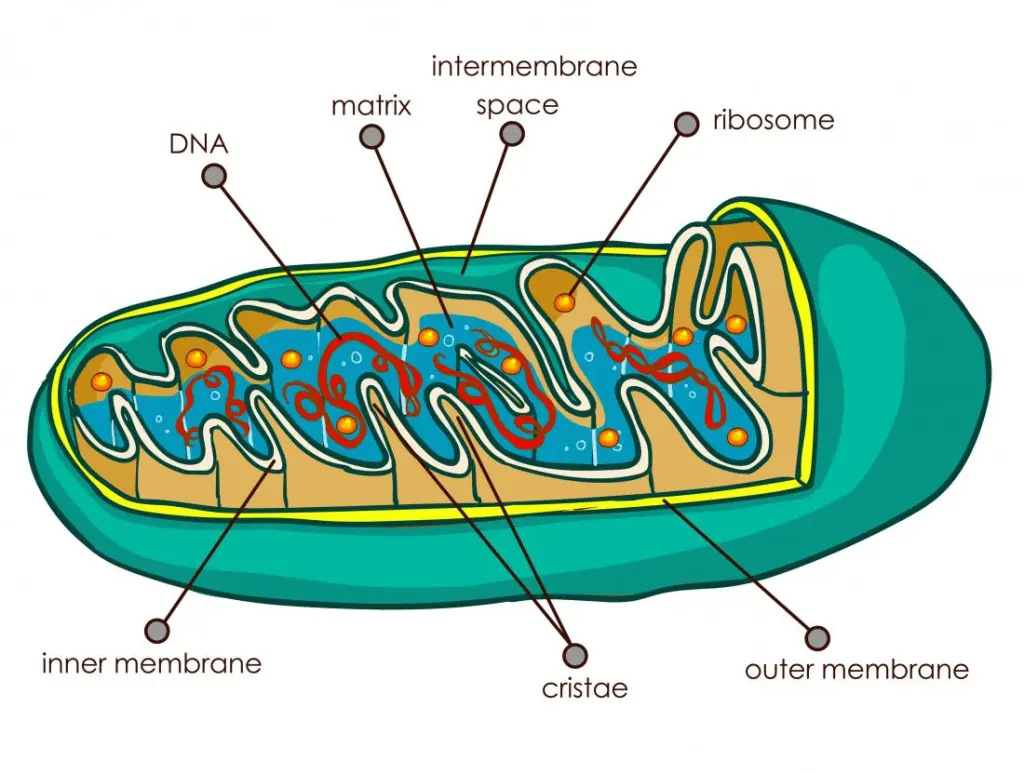
One can relate a fascinating fact to the inheritance of Mitochondrial DNA.
It suggests that unlike the formation of regular DNA, the mitochondrial DNA transmits itself into the embryo from the maternal side.
The child inherits mtDNA only from the mother.
In spiritual terms, this phenomena has a great significance as the Mother is Devi and mtDNA symbolizes, in many ways, Power or Shakti.
Test your Alignment with the Spiritual Subject Matter (only 7 Questions)
The scores generated in this Quiz are relative. There are no right or wrong answers. A percentage towards 100 indicates that you are more aligned to the overall subject matter.
Power of Devi and protection from diseases
In spirituality, Shakti and Devi are non-different. She symbolizes the universal energy and the ultimate mother of all human beings. So, Mother, Shakti Devi and Mitochondria remain deeply interrelated. Navratri fasting enables human beings to acknowledge this fact.
Scientific studies have proved that mitochondria performs its functions best, after intermittent fasting.

Fasting heralds a rejuvenation period for mitochondria and it works to our advantage.
It prevents age related problems. Also, it eradicates the lingering chances of liver damage, high cholesterol and blood sugar levels. Navratri Fasting qualifies as a medium through which we become capable of preserving this cosmic feminine energy.
Material Benefits of Navaratri Puja
The worship has great significance. People believe that by following the course of puja on the 10 auspicious days of the festival yields positivity and eradication of evil or dark energies.
Also, this period has divine energies, exercised to fulfil desires. Devotees use these powers for their own advantage. Some use it for receiving profits from their businesses while others use it for the well-being of their family.
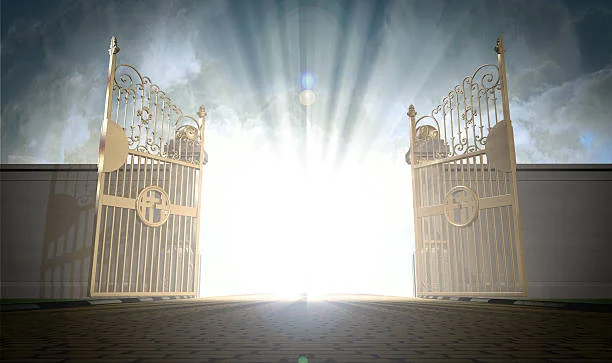
However, there are many other benefits like good health, fortune, beating competition, protecting oneself from the effects of black magic, etc. No evil spirit can harm a person who follows the course of Navaratri Puja with sincerity.
Navaratri correlates to Siddhis
The above mentioned were material benefits which also include Siddhis like attaining perfection of speech or Vak Siddhi. This means that whatever you say, becomes real. You attain the potency of making your words come true.
One must follow certain processes in order to attain such siddhis or perfection. Other siddhis include becoming great astrologers, physicians, creative initiators, like becoming a great musician, instrumentalist or painter, mathematician, etc.
One can attain Moksha
However, Sadhus and Yogis dedicated to Devi, perform Navratri Puja with the intention of Moksha Prapti. Such devotees never fall prey to the cycle of birth and death.
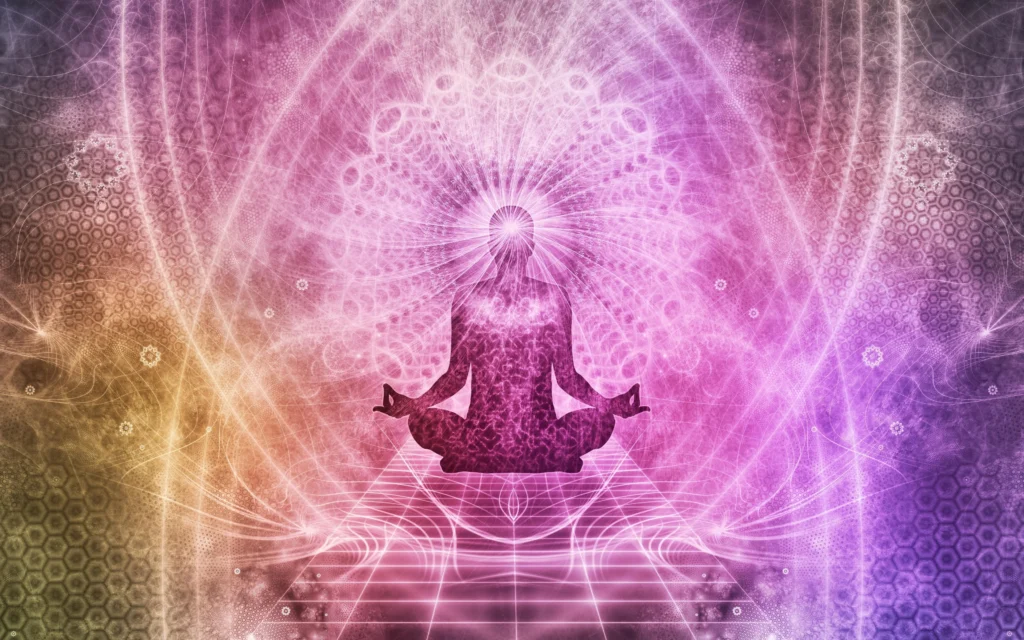
Such a devotee attains liberation as a result of their sadhana carried out in the span of these 9 days. These benefits happen due to the effect of the Dasa Mahavidyas.
The negative effects of planetary positions come under control and work towards the fulfilment of desires of the devotees.
Please Like the Blog and Share it for Maximum Reach

